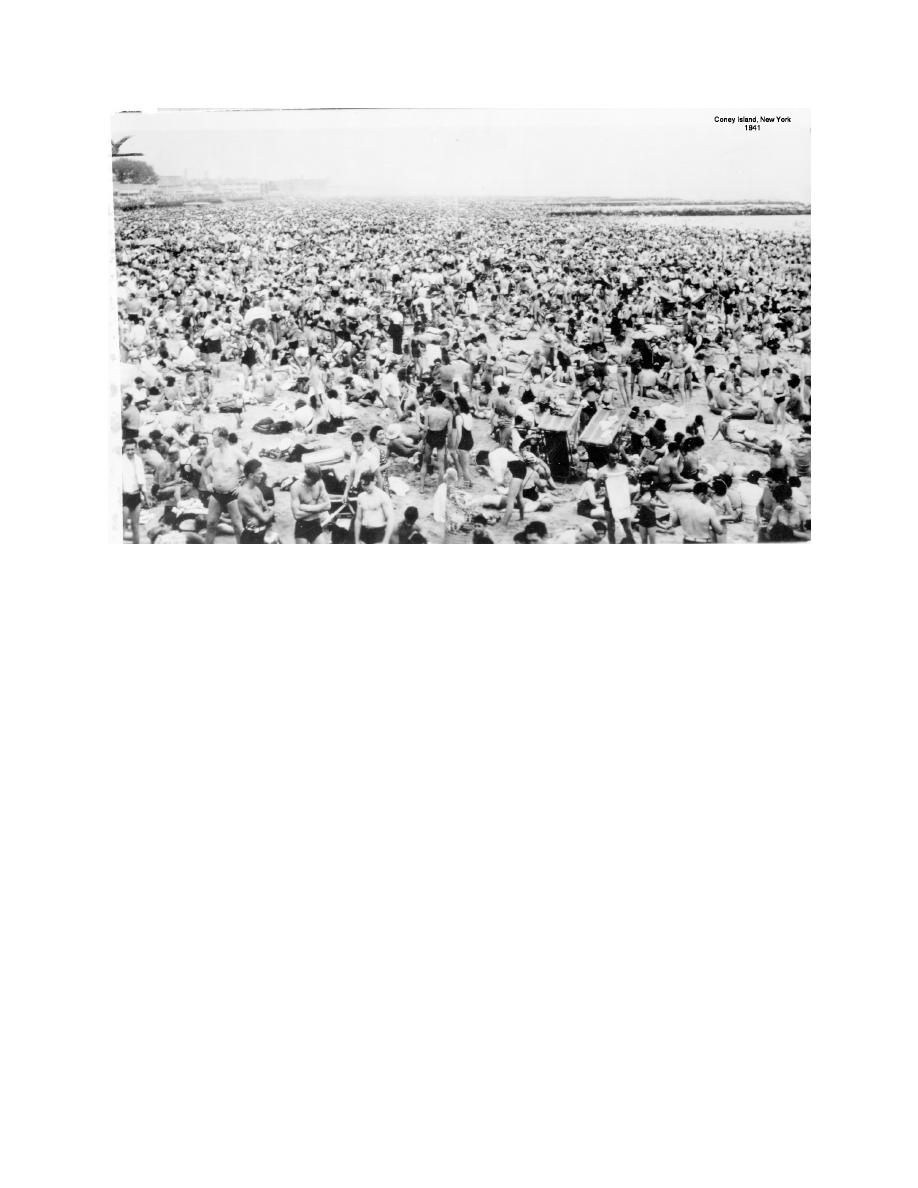
EM 1110-2-1100 (Part I)
30 Apr 02
Figure I-3-10. Coney Island in 1941, on the eve of World War II. For only a 5-cent subway ride, workers from
the sweltering city could relax at the beach (from Beach Erosion Board archives)
scientific investigations into coastal processes despite the lack of authorization in either the 1930 or 1936 acts.
By the beginning of World War II, the BEB was publishing technical reports and memoranda on its research
results (Moore and Moore 1991).
i. Dalecarlia reservation and World War II. Expansion of military activities prior to our entry into
World War II required the removal of the Washington Engineering District and the BEB from the Navy
Building on Constitution Ave. in Washington, D.C. to a small office building on the Dalecarlia reservation
in Washington. The new site was adequate for expansion of facilities, which was to follow, and admirably
served the BEB's needs. Upon our entry in the war, need soon arose for intelligence to meet amphibious
operations requirements and research to explore means of providing expedient harbor facilities. Logically,
the Chief of Engineers called on the BEB staff for assistance on these problems. In addition, the BEB was
tasked to train intelligence teams to staff the various military commands. Although these activities were
directed toward military requirements, they provided much additional data and knowledge for later use in the
Board's peacetime mission. Interest and activity in Congress to clarify the problem of federal aid for shore
protection resumed as the war drew to a close. Public Law 166, enacted on July 31, 1945, substituted "public
interest" for "Federal interest" as previously used in the 1936 Act, and a year later, Public Law 727 spelled
out the conditions and limitations for federal aid for shore protection works. Only publicly owned shores
were eligible and the Federal contribution could not exceed one-third of the first cost of protective works with
no contribution toward maintenance cost. During the Korean War, most of the Board's staff was again
diverted to military efforts. During this lull in preparation of cooperative studies, Technical Report
No. 4, Shore Protection Planning and Design, was produced. The report was a manual of coastal
engineering that summarized the knowledge gained by the BEB and representing its current technical
doctrine. Cooperative studies resumed at an accelerated pace with the end of the Korean War. Congress
History of Coastal Engineering
I-3-19


 Previous Page
Previous Page
